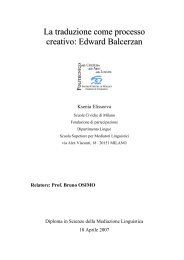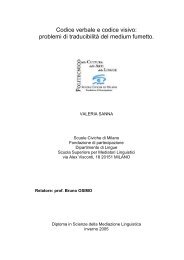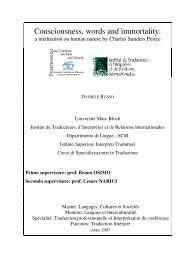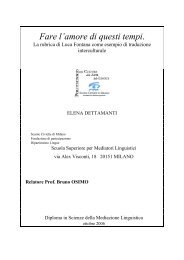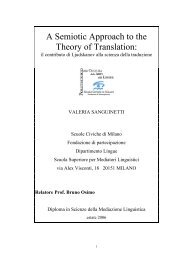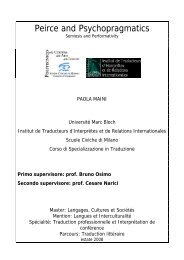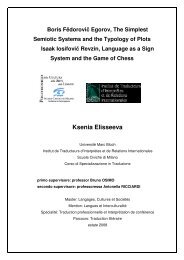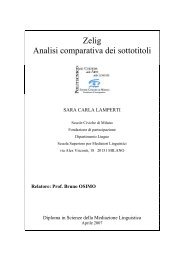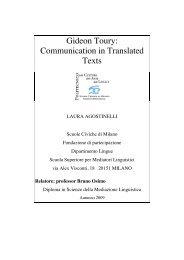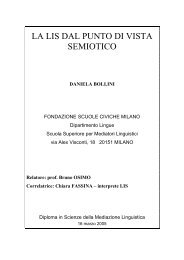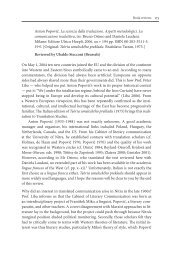Relatore: Professor Bruno OSIMO - Bruno Osimo, traduzioni ...
Relatore: Professor Bruno OSIMO - Bruno Osimo, traduzioni ...
Relatore: Professor Bruno OSIMO - Bruno Osimo, traduzioni ...
Create successful ePaper yourself
Turn your PDF publications into a flip-book with our unique Google optimized e-Paper software.
The second example of personal history as an explanation concerns<br />
Penny, a professional translator whose translation was rated as ‘mediocre’.<br />
Penny’s verbalisations as well as her comments in the follow-up letter (see<br />
examples below) imply that her experience with translating medical texts<br />
resulted in her translating for the wrong audience in the experiment. This<br />
observation is linked to the effects of the experimental situation. In cognitive<br />
psychology (e.g. Saariluoma 1988b: 56), it has been observed that in problem-<br />
solving situations subjects often make so-called cognitive errors, i.e. the<br />
subjects do not perceive the situation correctly and, as a result, are not able to<br />
collect and utilise all the information relevant to successful task performance.<br />
Cognitive errors take place in ‘natural’ problem-solving situations, too, but it<br />
stands to reason that the additional strain created by the experimental<br />
situation might increase their probability.<br />
Evidence of Penny’s misinterpretation of the task is shown in example<br />
(4). Here Penny decides to retain the original English explanation of ‘NADPH’<br />
in the translation, because she thinks that the readers of the translation will be<br />
familiar with the acronym. This implies that the potential readers Penny has<br />
in mind were experts in medicine rather than ordinary newspaper readers.<br />
(4) ja (.) sitten laitan sulkuihin ihan tos englanninkielisessä<br />
kirjotusasuasussaan tää nicotineamide adenine dinucleotide<br />
phosphate hybri-hybridi<br />
mä en tietäs muita mitää muuta ku että se on fosfaattihybridi<br />
mutta (2.0) mut touta (1.0) mä luulen että (.) et et ne ihmiset<br />
jotka (3.0) tai olenkin varma et et (.) et joille toi NADPH jotaki<br />
tarkottaa ni (1.0) ni ne he (.) he tietää sen ihan tolla lyhenteellä (.)<br />
(Penny: P)<br />
38



